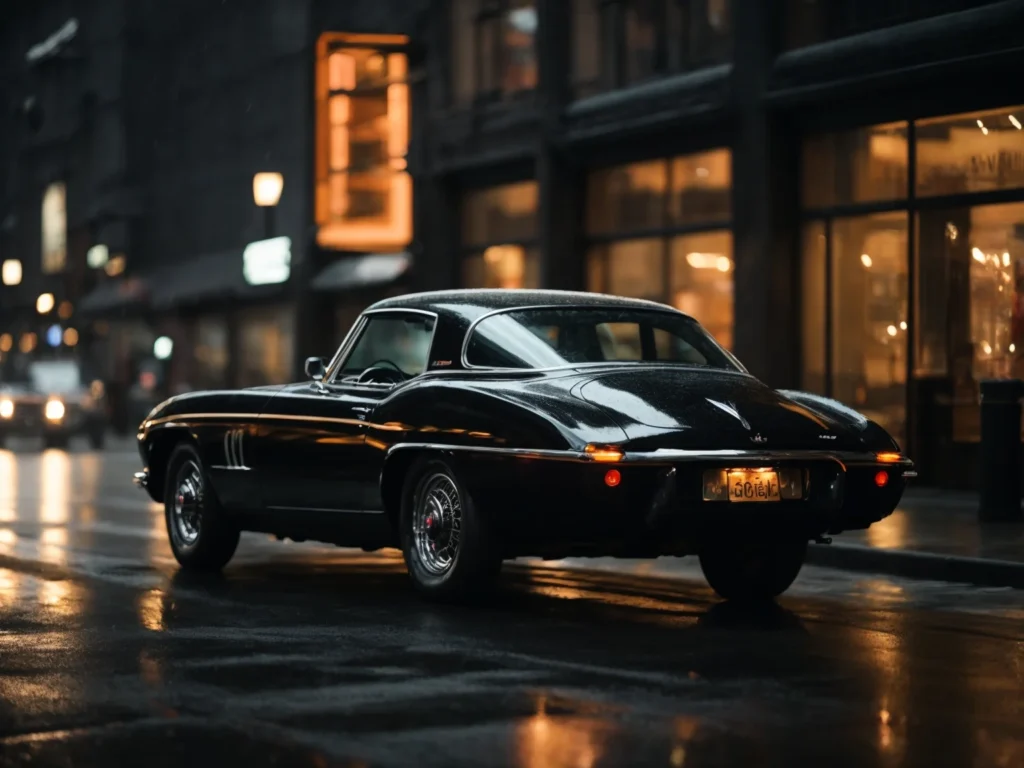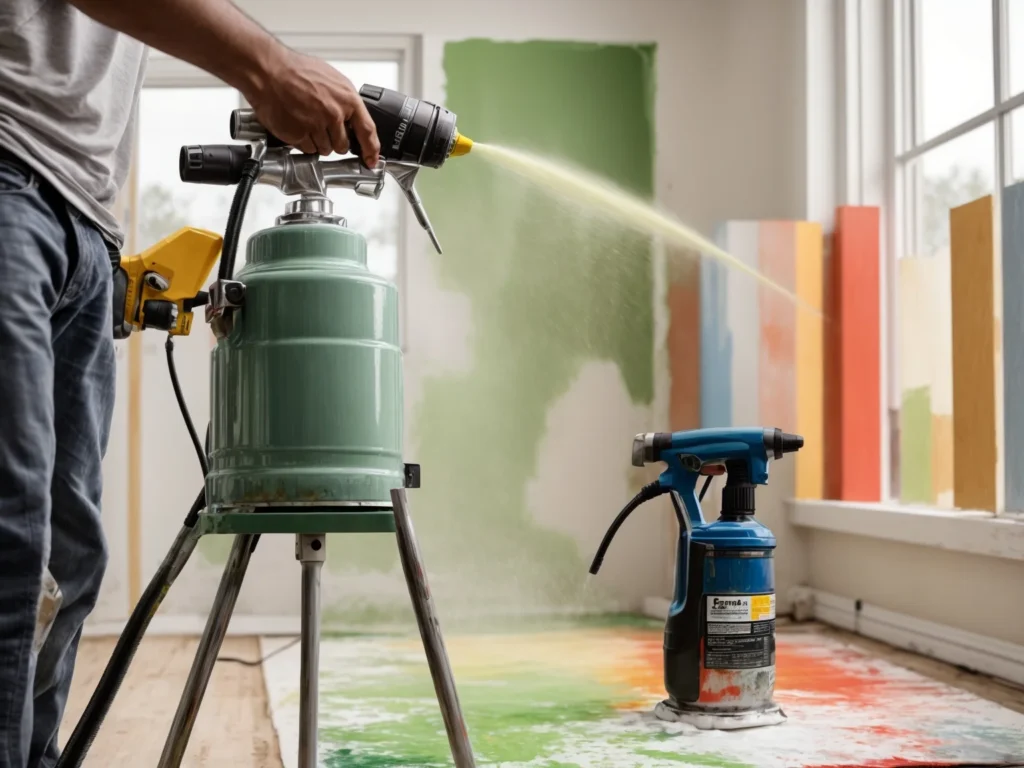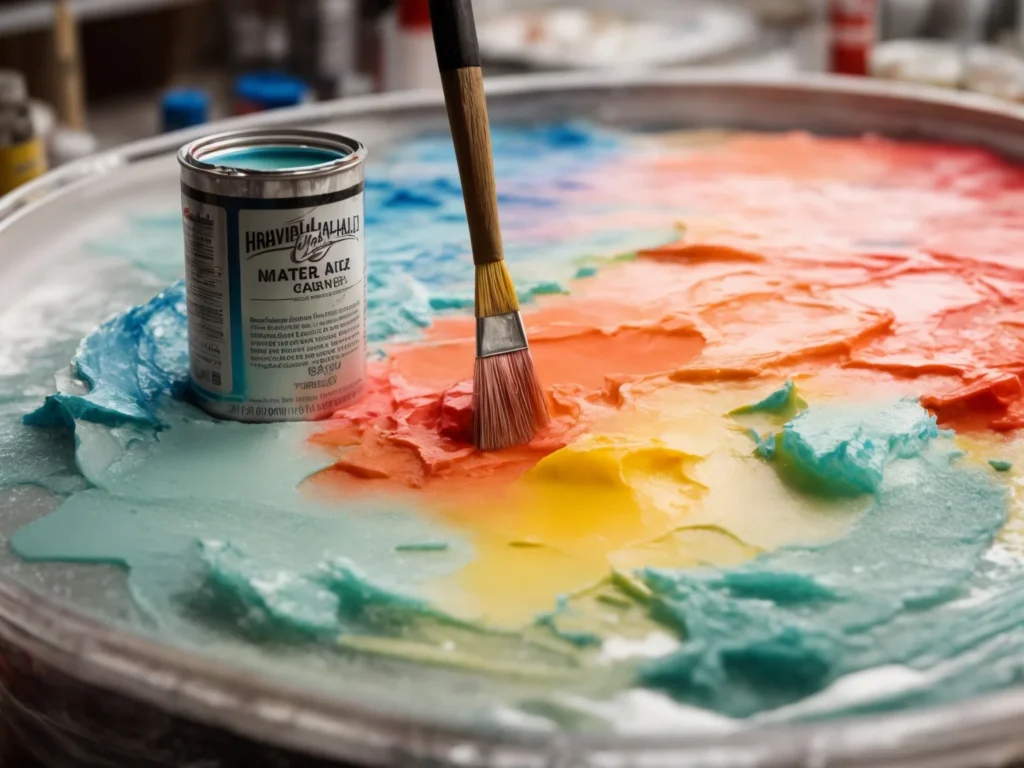Seeing those unsightly black spots appearing on your car’s exterior can be disheartening. The paint job that started out glossy and pristine ends up dotted with dark blemishes. While it may look like a serious problem, identifying the cause of the black spots can make them easier to deal with.

What Causes Black Spots on Car Paint?
Several common culprits lead to the appearance of black spots on your vehicle’s painted surfaces:
Artillery Fungus
One of the most prevalent causes of black spots on cars is artillery fungus, also known as shotgun fungus. This is a type of mold that fires its spores outwards onto surrounding surfaces. The spores are sticky when launched and adhere strongly to car paint and other exterior parts of a vehicle.
Artillery fungus thrives in damp, warm environments. Areas with frequent rain, high humidity, and mild temperatures see the most growth of this type of mold. The spores need moisture to germinate and start new fungal colonies.
When artillery fungus spores land on your car’s paint, they begin consuming any grime, sap, and organic debris stuck to the finish. As the fungus spreads, it leaves behind the black, tar-like spots. These slowly etch into the clear coat and can be difficult to wash off.
Tree Sap
Another common culprit for black spots is tree sap. Many trees drip sap as part of their normal growth cycle. Sap contains oils, resins, and sugars. When it drips onto your car’s paint, these organic compounds oxidize and turn into black or dark brown spots.
Tree sap is stubborn when dried and baked by the sun. It bonds to the clear coat and resists normal washing. The spots can gradually spread over time. Parking under trees is one of the easiest ways to end up with sap spots on your vehicle.
Rail Dust
If you park near train tracks, you may accumulate spots from rail dust. This dust contains bits of steel and iron from locomotive brakes and wheels as they pass by. The small metallic particles bond quickly to car paint.
As the bits of metal rust, they turn into reddish-black spots spread across the horizontal surfaces of the car. Areas like the hood, roof, and trunk lid are most affected. Without regular washing, rail dust debris continues building up over time.
Insect Splatter
Various insects can leave splatters on your car that turn into black spots. Lovebugs that plaster the front of cars during mating season are a notorious example. As their bodies decay on the paint, they leave dark stains behind.
Bee excrement is another common insect-related culprit. When bees pass over, they may defecate mid-flight. The resulting spots can be challenging to wash off completely. Parking under trees and bushes where insects are active leads to increased chances of insect residue.
Industrial Fallout & Pollution
Areas with heavy industry can suffer fallout of dark particulate matter. Soot, ash, and combustion byproducts drift through the air and gradually accumulate on surfaces. Vehicles left parked near factories and industrial centers end up dotted with stubborn black spots as a result.
Similar dark dust and grime from pollution can also cause spotting, especially in urban environments. The mix of particulate matter from car and truck exhaust, factories, and construction sites plates out on car paint. Road tar used in asphalt and roofing shingles is another common pollutant that creates dark spots.
Oxidation
On older cars with fading, oxidized paint, black spots can indicate areas of advanced deterioration. As the clear coat breaks down with age, the pigmented base coat becomes directly exposed to air and sunlight. This speeds up oxidation in affected areas, causing them to turn darker than surrounding paint.
These emerging black spots signify that the clear coat has failed in that location. Once the base color coat is unprotected, accelerated fading and corrosion quickly follow. This often leads to rust and perforation without swift repainting.
Mold & Mildew
If moisture gets trapped under a car cover or other protection, it can allow mold and mildew growth on the paint. Similar to artillery fungus, these other microorganisms leave black stains on the finish. Areas of the vehicle that see less sun due to parts like spoilers and wings are most prone to this type of mold spotting.
Hard Water Spotting
On paint that is no longer protected by wax or sealant, mineral deposits in hard water can leave behind black stains. These are most noticeable on horizontal surfaces that are routinely exposed to rain and sprinklers. As the water droplets dry, they deposit calcite, silica, and other dissolved solids which then bond to the paint.
These types of spots begin as whitish mineral residue. Over time, they turn darker as more debris accumulates on top and trapped dirt builds up in the deposit.
How to Remove Black Spots from Car Paint
Getting rid of black spots on your car’s paint requires matching the removal method to the cause. Here are some recommended techniques for safely eliminating common sources of dark spots:
Isopropyl Alcohol for Sap, Bugs, and Rail Dust
One of the most effective ways to dissolve and lift black spots from car paint is rubbing or isopropyl alcohol. The solvent properties help break down organic compounds while the alcohol cuts through oily films.
Dampen a microfiber cloth with a 91% isopropyl alcohol solution. Test a small, inconspicuous area first to ensure the paint is resistant. Gently rub at the spots in a circular motion until they begin dissolving. Rinse thoroughly with clean water afterwards.
Both tree sap and insect remains like lovebugs come off with careful alcohol cleaning. For more stubborn rail dust, let the alcohol soak for a few minutes before rubbing. Avoid excessive pressure or abrasion.
Clay Bar for Surface Debris
Using a detailing clay bar is another popular technique for removing black spots from car paint. The clay’s fine abrasive particles help lift off surface debris that normal washing leaves behind.
Always lubricate the clay with a spray detailing solution. Gently glide it over affected areas to pull up embedded rail dust, metalized sap droplets, soot, and other debris. Rinse thoroughly and follow up with wax or paint sealant when complete.
Car Wash Soap for Artillery Fungus
Artillery fungus spores require thorough soaking with warm, soapy water to remove in most cases. Rinsing alone often fails to dislodge the sticky spores. Covering the affected areas with car wash soap paired with gentle agitation helps dissolve the bonds.
Use a clean microfiber mitt and quality car shampoo. Allow the suds to soak for a few minutes before rinsing. Repeat as needed for stubborn spots. Follow up with an antifungal spray to deter future growth. Keeping the finish waxed or sealed also makes spore removal easier.
Bug and Tar Remover Spray
Specialty sprays designed to dissolve bug remnants and road tar can help tackle some types of black spots. These removers contain powerful solvents and surfactants tailored to breaking down organic compounds.
Apply the remover to the spots per the product directions. Let it soak in for a few minutes before scrubbing with a bug scrubber pad or microfiber. Rinse thoroughly afterwards. Be careful using remover sprays on older, faded paint as they can damage the finish.
Baking Soda Scrub for Hard Water Spots
For dark mineral deposits from hard water, make a paste with baking soda and water. Apply the paste to the spots and let sit for 2-3 minutes. The baking soda will help dissolve and lift the bonded mineral residue. Wipe away with a damp microfiber towel, then rinse.
This method can take multiple applications to fully remove some water stains. It also works well on light acid rain etching that eats through clear coat. Always re-apply wax or sealant after scrubbing to restore protection.
Polish to Remove Shallow Spots
For black spots limited to the clear coat surface, polishing may help remove them. Use a dual-action polisher with a mild polish and polishing pad. Work in small sections with moderate speed. The gentle abrasion can eliminate discoloration without cutting into the paint.
Be very careful with polishing methods on older, compromised paint. Trying to polish out deeply instilled stains often burns right through the clear coat. Test thoroughly first and stop immediately if you see paint removing.
Repainting for Heavy Damage
In cases where black spots have eaten through the clear coat exposing bare metal underneath, repainting may be the only remedy. Once the base coat is breached, rusting and corrosion quickly follow. Even if you remove the original stain, the damage remains.
Thoroughly clean and sand the affected areas before repainting. Carefully feather and mask around the repair. Apply color-matched base coat in thin, even layers, followed by clear coat. Allow proper drying time between layers. Blend carefully with the surrounding finish.
For extensive staining and etching that has spread across large portions of the car, a full respray may be justified to restore full gloss and protection. Consult with reputable body shops that offer paint detailing services.
Prevention Tips to Avoid
Here are some proactive steps you can take to prevent black spots from marring your car’s exterior in the first place:
Wash Regularly
Make frequent washing part of your maintenance routine. Every 2 weeks is ideal for most vehicles. This prevents contaminants like sap, rail dust, and pollution from bonding permanently to the paint. Catching them quickly makes removal much easier.
Use a quality car-specific shampoo and microfiber mitts to avoid scratching. Be thorough and gently scrub at stuck-on bugs, tree drippings, and other debris. Follow up with a paint sealant after washing for added protection.
Avoid Parking Under Trees
Choose parking spots that are away from trees whenever possible. This reduces exposure to dripping sap, leaves, and debris that can stick to your car’s paint. It also decreases the chances of artillery fungus spores drifting down from the branches above.
If you have no choice but to park near trees, inspect your vehicle closely each day. Look for any fresh sap or leaf droppings that need prompt cleaning before they oxidize and bond permanently.
Use Car Covers
Invest in a fitted car cover to shield your vehicle when parked outside for extended periods. Look for breathable, weatherproof fabrics. The cover blocks exposure to spores, pollution, tree drippings, and other contaminants.
Remove the cover at least once a week to check for any moisture buildup. Use a leaf blower to clear off dust before removing the cover. Store the cover neatly when not in use.
Avoid Following Trucks Closely
Leave extra distance between your car and gravel trucks or haulers on dirt roads. This reduces swirling gravel bits from plating onto your paint. Staying back also decreases exposure to debris that falls from truck beds onto the roadway.
Going through railway crossings at high speeds can also throw rail dust up onto your car. Slow down and close windows when passing over tracks to reduce accumulation.
Use Radar Detectors
Consider installing radar detectors facing both front and rear. These can provide advance warning of trains approaching level crossings. This allows you to stop and close windows to minimize rail dust intake before crossing tracks.
Similarly, knowing when trucks are coming up behind you on haul routes gives you the chance to slow down and move over to avoid swirling gravel. Advanced notice helps take preventative action.
Rinse Off Rail Dust ASAP
If you drive near railways frequently, make it a habit to rinse your car as soon as possible after crossing tracks. Use a pressure washer or hose to flush away metal particles before they can fully bond to the paint. This makes them much easier to remove.
Spray down the undercarriage as well, where rail dust also tends to accumulate. Thorough rinsing minimizes the amount that sticks to your vehicle.
Apply Paint Protection Film
For cars parked near railways long-term, investing in paint protection film can help avoid etched-in spots. The clear urethane film acts as a sacrificial barrier over the finish. It takes the brunt of abrasive debris so your paint remains pristine underneath.
Full wraps with paint film aren’t cheap but they’re effective for high-exposure conditions. Even applying film just to forward facing surfaces like the hood helps. DIY application kits are more affordable.
Avoid Parking Near Mulch
Wood mulch used in landscaping is a prime breeding ground for artillery fungi. The moist organic matter is ideal for the mold. Try not to park cars directly over or adjacent to mulch beds. This greatly reduces spore exposure that can rain down on your vehicle.
Carefully inspect cars parked near mulch beds frequently for any emerging black spots. Promptly wash off spores before they can embed and etch the clear coat. Be vigilant about mold prevention in humid climates.
Apply Wax or Sealant Regularly
Using paint sealants and wax not only helps repel contaminants, but also makes removal much simpler when spots do occur. That protective barrier keeps sap, bugs, and rail dust from bonding directly to the clear coat surface.
Aim for applying sealant every 3 months to maintain optimal slickness and protection. Wax can be layered on top for added water beading. This guards your paint from permanent etching and minimizes stubborn spots.
Garage Parking
One of the most effective prevention measures is parking in an enclosed garage whenever possible. This provides a barrier against pretty much every common source of paint spots. Tree debris, sap, humidity, mold spores, and pollution are all shut out.
Your vehicle remains clean longer when shielded from the elements in a garage. Park inside during peak pollen seasons or when neighboring trees are dripping sap. It’s also good protection during artillery fungus spore releases.
Prompt Removal
Inspect your car at least weekly for any new spots or residue. Address them promptly by washing before they have a chance to set and bond. Surface contaminants are easiest to remove when fresh.
Set reminders to check under the hood, roof, and rear surfaces where new spots may appear unnoticed for longer. Don’t neglect the underside – look for spots building up on fenders and the undercarriage.
When to Call a Professional Detailer
In severe cases of staining or etching that cover large areas of the vehicle, you may choose to hand it over to professional detailing specialists. Their commercial equipment, chemical treatments, and techniques can tackle extensive damage beyond what typical DIY efforts can handle.
Examples where professional paint correction is recommended include:
- Artillery fungus has aggressively etched the clear coat across most horizontal surfaces
- Sap stains have spread under body trim pieces and into crevices
- Rail dust is ground deeply into the paint from long-term exposure
- Paint oxidation has allowed large black spots to appear indicating clear coat failure
- Spots have worn through to bare metal in sections and begun rusting
Reputable detailers have access to aggressive polishers and compound glazes capable of removing layers of clear coat safely. Their specialized tools like clay blocks also pick up ingrained debris better than DIY clay bars.
For restoration of small sections where stains have reached the base coat metal, paintless dent repair tools can economically fix the damage without full repainting. Damaged clear coat is refilled for a permanent fix.
Always thoroughly discuss the scope of work and process before committing. Get a written quote that clearly specifies steps to be taken, products to be used, and expected outcomes. This avoids misunderstandings down the road.
Understand that aggressive detailing may permanently thin the clear coat. Multiple treatments shorten the paint’s lifespan. Weigh the costs versus living with spots on older cars. Keep realistic expectations – severe etching cannot be made invisible.
Maintaining Your Car’s Exterior Finish
Avoiding and treating black spots goes hand in hand with proper car paint care in general:
- Wash using the two bucket method with grit guards. Rinse thoroughly.
- Follow with a paint-safe clay bar treatment twice annually to remove bonded contaminants.
- Apply paint sealant or ceramic coating according to product instructions for durability.
- Wax for added water beading and depth if desired.
- Hand dry or use a leaf blower to prevent water spotting.
- Immediately remove sap, bird droppings, etc. when fresh.
- Repair chips quickly and use touch-up paint to prevent rusting.
- Inspect for new blemishes during regular washes. Treat quickly.
- Store indoors or under a cover when possible.
- Avoid brush or automated car washes. Use touchless washing only.
- Follow a routine maintenance schedule to protect the finish.
Keeping your car’s paint looking its best requires awareness and diligence. Addressing black spots promptly while using proactive prevention makes the effort worthwhile. With some persistence and the right techniques, you can keep that showroom shine.





